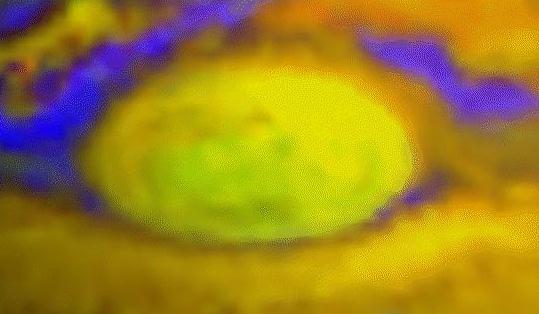Explanation: What happened to Jupiter's Great Red Spot? Operating at a chilly 55 degrees Kelvin, the Galileo Spacecraft's Near Infrared Mapping Spectrometer (NIMS) recorded this composite image of Jupiter's Great Red Spot in late June 1996. Red, green, and blue colors were chosen to represent three different infrared wavelengths detected by the NIMS instrument. The resulting yellowish green appearance of the massive Jovian storm system - a cold, high pressure area 2 to 3 Earth diameters wide - indicates that it lies high above the surrounding cloud features. Blue corresponds to regions where the clouds are relatively thin and the features lie at greater depths.
Authors & editors:
Robert Nemiroff
(MTU) &
Jerry Bonnell
(USRA)
NASA Web Site Statements, Warnings,
and Disclaimers
NASA Official: Jay Norris.
Specific
rights apply.
A service of:
LHEA at
NASA /
GSFC
& Michigan Tech. U.
Based on Astronomy Picture
Of the Day
